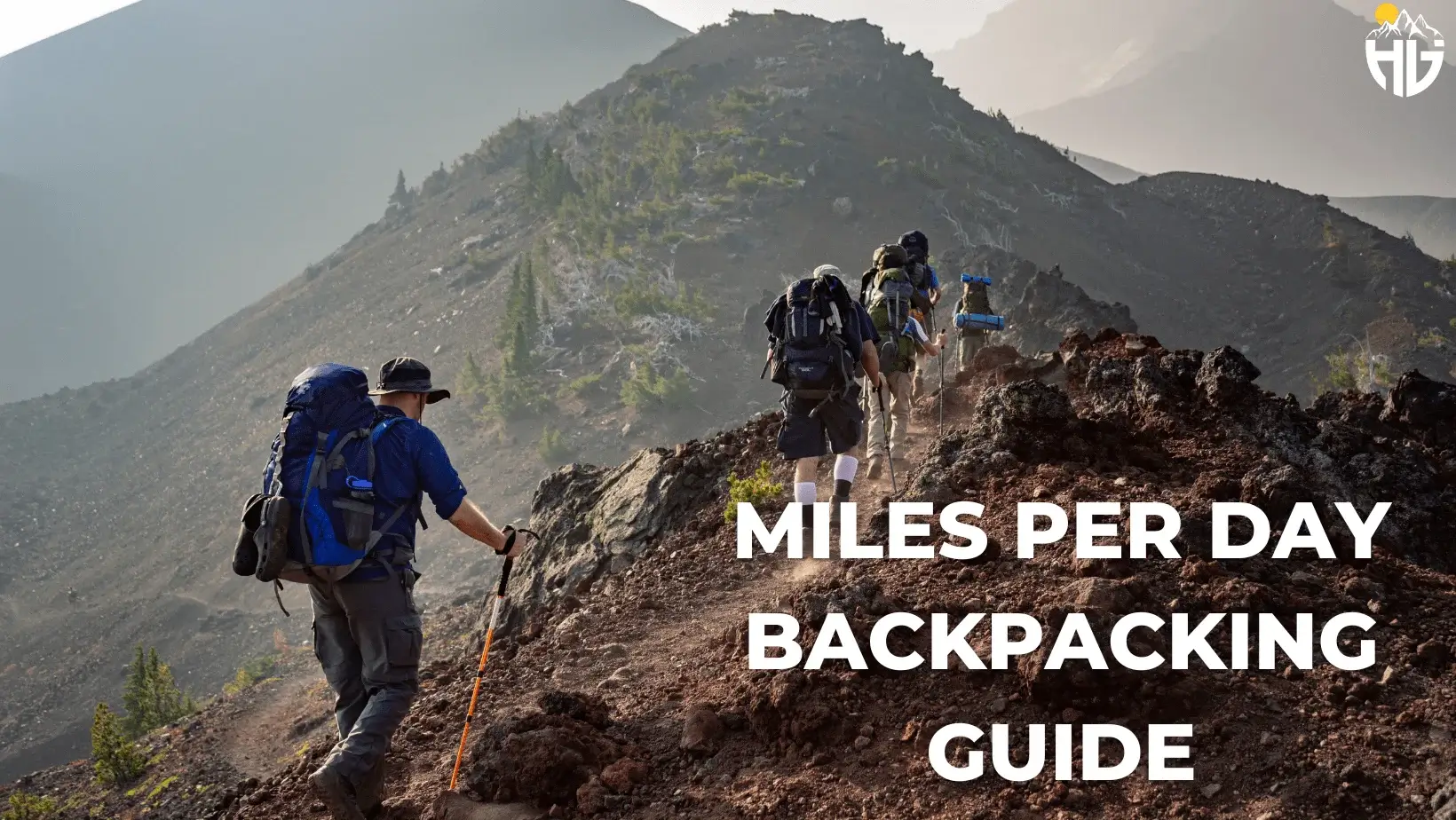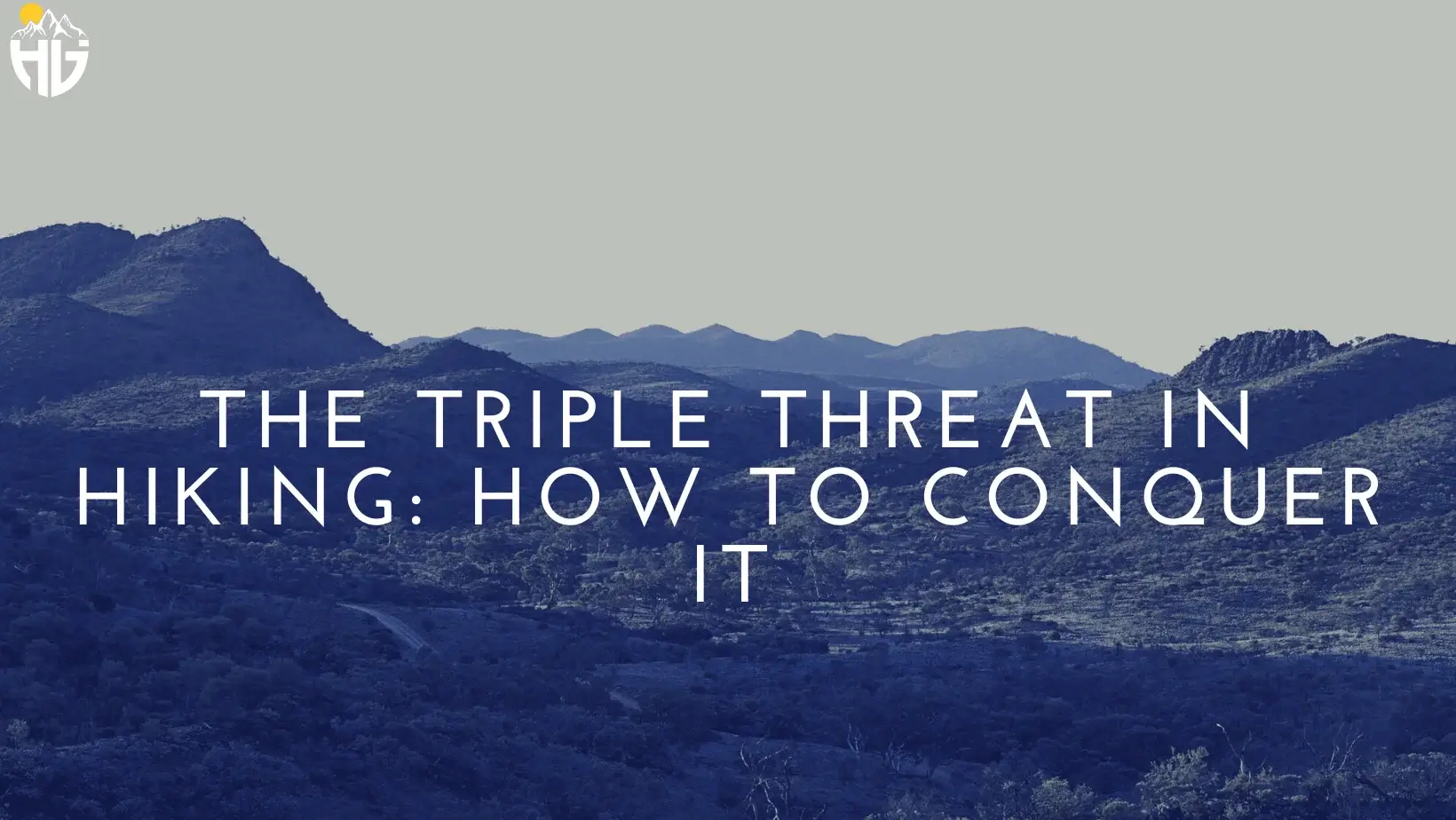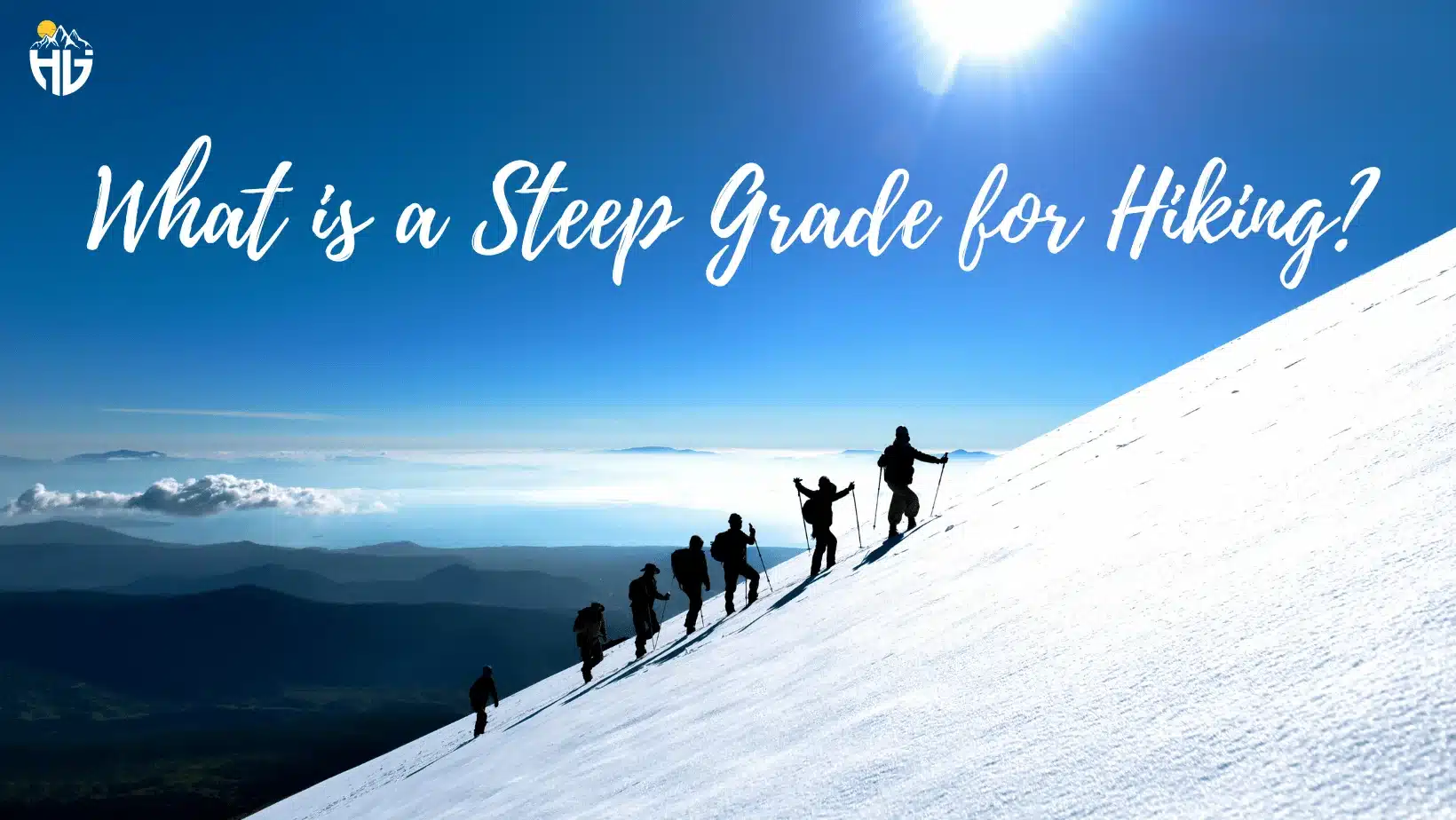How Much Should a Sleeping Bag Weigh for Backpacking
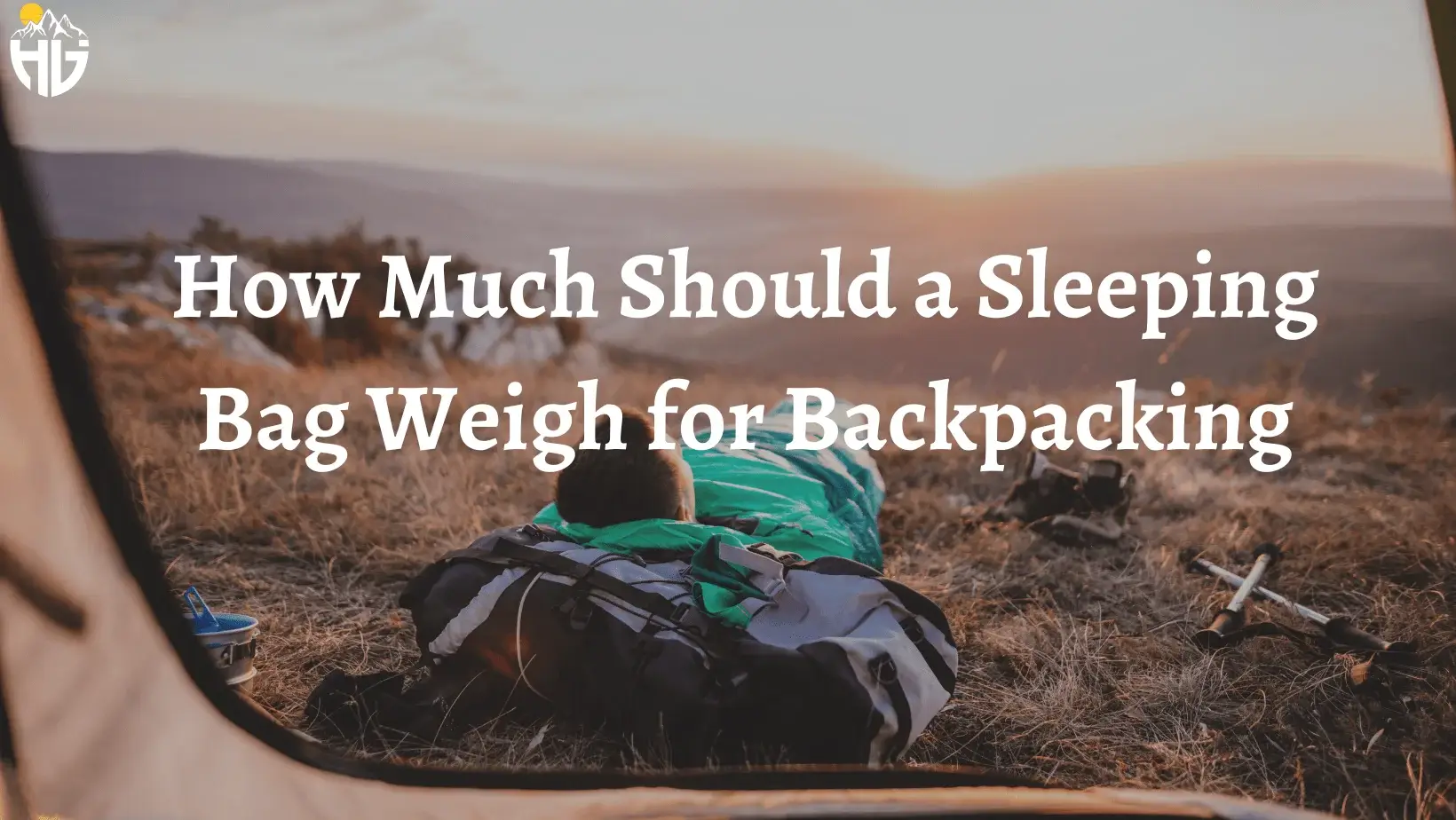
Embarking on a backpacking journey through nature’s wonders is an exhilarating experience, and having the right gear can make all the difference. As you traverse diverse landscapes, the importance of lightweight gear for backpacking becomes increasingly evident. With each step, the burden of your pack can either hinder or enhance your enjoyment of the great outdoors. That’s why you must know how much should your sleeping bag weigh during backpacking.
Striking the perfect balance between weight, comfort, and functionality is key to ensuring a memorable and fulfilling adventure. In this article, we’ll explore the factors that influence the weight of a sleeping bag, discuss various types of backpacking sleeping bags, and delve into ultralight sleeping bag options and strategies to reduce weight without sacrificing comfort.
By the end of this comprehensive guide, you’ll be well-equipped with the knowledge to make informed decisions about your sleeping gear, ultimately enriching your backpacking experience.
Factors to Consider When Choosing a Sleeping Bag Weight
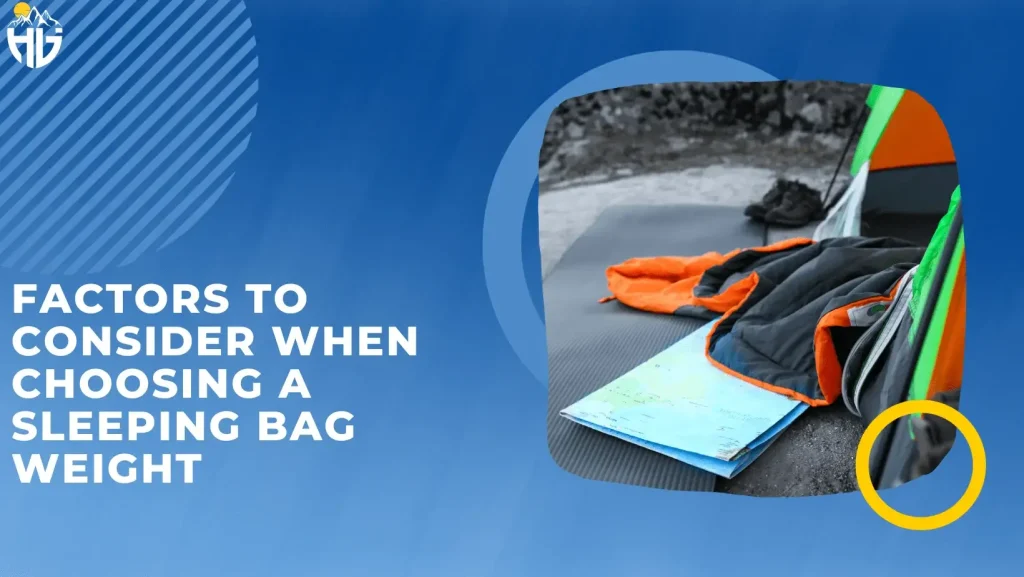
Backpacking sleeping bag can weigh differently depending upon some factors.
Trip duration and distance
The length of your backpacking trip and the distance you plan to cover play a pivotal role in determining the appropriate weight for your sleeping bag. On shorter excursions, you may be able to tolerate a slightly heavier bag, knowing that you won’t be carrying it for an extended period. However, on multi-day treks or long-distance hikes, every ounce counts, and opting for a lighter bag becomes crucial to ensure comfort and reduce fatigue.
Weather conditions and temperature rating
Seasonal variations
Different seasons bring about distinct weather patterns and temperature fluctuations, which must be taken into account when selecting a sleeping bag. Summer trips typically allow for lighter bags, as temperatures are generally warmer, and the need for insulation is reduced. Conversely, during colder seasons, such as fall and winter, a heavier, well-insulated bag is necessary to withstand the chilly nights.
Expected temperature range
It’s important to research the expected temperature range of your destination and choose a sleeping bag with a suitable temperature rating. A bag rated for lower temperatures will naturally weigh more due to the additional insulation. However, it’s better to err on the side of caution and carry a slightly heavier bag than to risk hypothermia or an uncomfortably cold night’s sleep.
Personal preferences and sleep habits
Warm sleepers vs. cold sleepers
Each individual has unique sleep preferences and tolerances for temperature. If you tend to be a warm sleeper, you might be comfortable in a lighter, less-insulated bag, even in cooler conditions. On the other hand, if you’re a cold sleeper, investing in a heavier, well-insulated bag would be wise to keep you warm throughout the night.
Sleep positions and bag shape
Your preferred sleep position and the shape of the sleeping bag can also influence its weight. Mummy bags, which are more form-fitting, often weigh less than rectangular sleeping bags. However, they may feel restrictive to some sleepers. Determine whether the potential weight savings are worth sacrificing some comfort and freedom of movement while you sleep.
Budget constraints
Cost vs. weight trade-offs
As with most outdoor gear, there’s often a trade-off between cost and weight. Lightweight sleeping bags, particularly those with down insulation, tend to be more expensive than their heavier counterparts. Consider your budget and weigh the benefits of investing in a pricier, lightweight bag against the potential drawbacks of carrying a heavier, more affordable option.
Investing in high-quality camping gear
Although it may be tempting to opt for a cheaper sleeping bag, investing in high-quality gear can be a wise decision in the long run. Quality sleeping bags are not only lighter but also more durable, providing better performance over time. A new sleeping bag can be a worthwhile investment, offering a balance between weight, comfort, and longevity that will serve you well on countless backpacking adventures.
Types of Backpacking Sleeping Bag and Their Weight

Synthetic Insulation
Pros:
- Generally less expensive than down-insulated bags
- Retains warmth when wet, dries quickly
- Hypoallergenic and less affected by moisture
- Low maintenance and easy to clean
Cons:
- Heavier and bulkier than down-insulated bags
- Less efficient warmth-to-weight ratio
- Shorter lifespan and reduced compressibility
Typical weight range
Synthetic sleeping bags tend to weigh between 2.5 and 5 pounds (1.1 to 2.3 kilograms), depending on factors such as temperature rating, size, and insulation material used.
Down Sleeping Bag
Pros:
- Lightweight and highly compressible
- Excellent warmth-to-weight ratio
- Long-lasting and durable when properly cared for
- Provides a cozy, comfortable feel
Cons:
- More expensive than synthetic bags
- Loses insulation properties when wet and takes longer to dry
- Requires special care for cleaning and storage
- May cause allergic reactions for some individuals
Typical weight range
Down sleeping bag generally weigh between 1 and 3 pounds (0.45 to 1.36 kilograms), with the variation depending on factors such as fill power, temperature rating, and bag size.
Hybrid Bags
Pros:
- Combines the benefits of both synthetic and down insulation
- Provides a balance between weight, warmth, and cost
- Resilient in damp conditions while retaining some of the lightweight characteristics of down
- Offers versatility for various backpacking scenarios
Cons:
- May not offer the same level of warmth as a full down bag
- Can be heavier and bulkier than a pure down-insulated bag
- Not as widely available as purely down-insulated or synthetic bags
- May not provide the optimal performance of either insulation type
Typical weight range
Hybrid backpacking sleeping bags typically weigh between 1.5 and 4 pounds (0.68 to 1.8 kilograms), depending on the ratio of synthetic to down insulation, temperature rating, and bag size.
Ultralight Sleeping Bags

Quilts
Advantages:
- Lightweight and highly compressible
- Improved ventilation and easy temperature regulation
- More freedom of movement compared to traditional sleeping bags
- Versatile; can be used as a blanket or wrapped around the body
Disadvantages:
- Less insulation around the sides and bottom, potentially leading to cold spots
- May require additional insulation, such as a sleeping pad, for optimal warmth
- Not as fully enclosed as traditional sleeping bags, which may be less comfortable for some users
- Can be less effective in extreme cold or windy conditions
Weight comparison with traditional sleeping bags
Quilts typically weigh between 1 and 2 pounds (0.45 to 0.9 kilograms), depending on the insulation type and temperature rating. This makes them significantly lighter than most traditional sleeping bags, which can weigh anywhere from 2.5 to 5 pounds (1.1 to 2.3 kilograms) for synthetic insulation and 1 to 3 pounds (0.45 to 1.36 kilograms) for down insulation.
Bivy Sacks
When to use a bivy sack instead of a sleeping bag
Bivy (bivouac) sacks are designed to be minimalist shelters, providing a lightweight and compact alternative to traditional sleeping bags and tents. They are most suitable for the following situations:
- Solo backpacking trips where weight and pack space are critical
- Fast-and-light adventures, such as mountaineering or bikepacking
- Emergency situations when you need a backup shelter option
- Minimalist camping in mild weather conditions
Keep in mind that bivy sacks are not meant to replace sleeping bags entirely, but rather act as a supplement or alternative when weight and space are at a premium.
Weight benefits:
- Bivy sacks are highly lightweight, typically weighing between 0.5 and 2 pounds (0.23 to 0.9 kilograms)
- They take up minimal space in your backpack
- Can be used in combination with a lightweight quilt or sleeping bag for added warmth
Drawbacks:
- Less comfortable and spacious than a traditional sleeping bag
- Condensation can be an issue, leading to dampness inside the bivy sack
- Limited insulation compared to a traditional sleeping bag, especially in colder conditions
- May not be suitable for long-duration trips or those requiring extended periods of rest inside the shelter
Reducing Sleeping Bag Weight Without Sacrificing Comfort

Compression sacks and storage techniques
Compression sacks are a practical solution for minimizing the volume of your sleeping bag, allowing you to pack it more compactly and save valuable space in your backpack. By using a compression sack, you can maintain the comfort and warmth of a slightly heavier sleeping bag without it occupying excessive room.
Additionally, proper storage techniques, such as loosely storing the bag when not in use, can help maintain the bag’s insulation and loft, ensuring that it remains effective and comfortable over time.
Utilizing sleeping bag liner
Sleeping bag liners are thin, lightweight sheets designed to be used inside your sleeping bag. They can provide several benefits that help reduce the overall weight of your sleeping system without compromising comfort:
Additional warmth: A Sleeping bag liner can add up to 5-15 degrees Fahrenheit (3-8 degrees Celsius) of insulation, depending on the material. This may allow you to choose a lighter sleeping bag with a higher temperature rating without sacrificing warmth.
Improved hygiene: Liners keep your sleeping bag cleaner by creating a barrier between you and the bag, reducing the need for frequent washing and prolonging the life of your bag.
Versatility: In warmer conditions, you can use the liner on its own, leaving the heavier sleeping bag at home. This can significantly reduce the weight of your sleep system, making it the ideal summer sleeping bag.
Combining with appropriate sleep systems
A comprehensive sleep system that works in harmony can help maintain comfort while reducing the overall weight. The use of a well-chosen sleeping pad is an essential component of this system:
Insulation: A sleeping pad provides insulation from the cold ground, allowing you to choose a lighter sleeping bag without sacrificing warmth. Look for a pad with a suitable R-value (a measure of insulation) for the expected temperature range of your trip.
Comfort: A comfortable sleeping pad can compensate for a lightweight sleeping bag with less cushioning, ensuring that you still get a good night’s sleep.
Adaptability: Opt for a sleeping pad that can be easily adjusted to your preferred firmness or can be partially deflated to save weight when conditions allow.
By combining these strategies, you can reduce the weight of your sleeping bag and sleep system without sacrificing the comfort and warmth necessary for a successful backpacking trip.
Top 5 Sleeping Bags for Backpacking
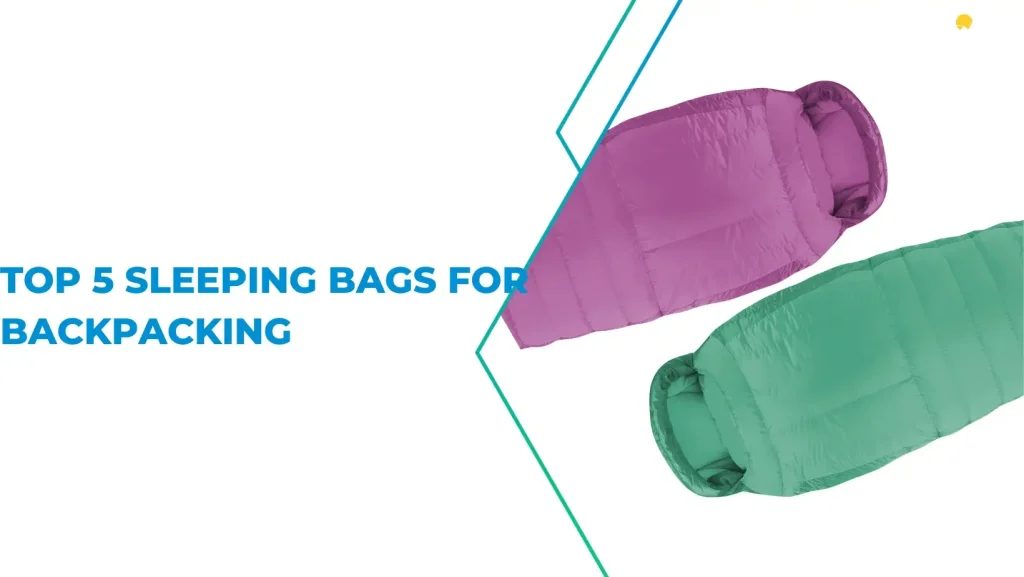
Western Mountaineering UltraLite
- A high-quality, down-insulated mummy bag suitable for three-season backpacking
- Weighs 1 lb 13 oz (0.82 kg) for the 6’0″ regular size
- Temperature rating: 20°F (-6°C)
Sea to Summit Spark SPIII
- A minimalist, ultralight down-insulated mummy bag ideal for summer backpacking trips
- Weighs 1 lb 6 oz (0.62 kg) for the regular size
- Temperature rating: 25°F (-4°C)
NEMO Disco 15
- A down-insulated, semi-rectangular bag with more room for side sleepers
- Weighs 2 lbs 11 oz (1.22 kg) for the regular size
- Temperature rating: 15°F (-9°C)
REI Co-op Magma 15
- Down-insulated mummy sleeping bags that offer a balance of warmth, weight, and affordability
- Weighs 1 lb 12.2 oz (0.80 kg) for the regular size
- Temperature rating: 15°F (-9°C)
Mountain Hardwear Bishop Pass 30
- A synthetic fill mummy bag suitable for wet environments
- Weighs 2 lbs 2 oz (0.96 kg) for the regular size
- Temperature rating: 30°F (-1°C)
Comparison Table of Each Bag
| Sleeping Bags | Weight | Temperature Rating | Insulation Type | Price |
| Western Mountaineering UltraLite | 1 lb 13 oz (0.82 kg) | 20°F (-6°C) | Down | $525 |
| Sea to Summit Spark SPIII | 1 lb 6 oz (0.62 kg) | 25°F (-4°C) | Down | $419 |
| NEMO Disco 15 | 2 lbs 11 oz (1.22 kg) | 15°F (-9°C) | Down | $300 |
| REI Co-op Magma 15 | 1 lb 12.2 oz (0.80 kg) | 15°F (-9°C) | Down | $389 |
| Mountain Hardwear Bishop Pass 30 | 2 lbs 2 oz (0.96 kg) | 30°F (-1°C) | Synthetic | $180 |
Conclusion
As we reach the end of our exploration into the world of sleeping bags, it’s important to revisit the key factors that contribute to choosing the right sleeping bag that weigh according to your backpacking needs. Remember to take into account the trip duration and distance, weather conditions, personal preferences, and budget constraints when making your decision. With a plethora of options available, ranging from synthetic or down fill bags to ultralight quilts and bivy sacks, it’s crucial to research and invest in the best sleeping bag which suits your individual requirements.
We encourage you to take the time to explore the market, read reviews, and even test out various sleeping bags to ensure you find the perfect match. By doing so, you’ll be well on your way to optimizing your backpacking experience, striking that delicate balance between weight, comfort, and functionality. Embrace the lightweight philosophy and embark on your next adventure with confidence, knowing that you’ve equipped yourself with the knowledge and gear to make your journey truly unforgettable.
Frequently Asked Questions
How Much Should a Sleeping Bag Weigh for Backpacking?
The ideal weight for sleeping bags when backpacking depends on various factors such as trip duration, weather conditions, personal preferences, and budget constraints. Generally, a lightweight sleeping bag for backpacking should weigh between 1 and 3 pounds (0.45 to 1.36 kilograms).
For summer or warm-weather backpacking trips, a lighter backpacking sleeping bag with a higher temperature rating (usually 30-50°F or -1 to 10°C) may suffice, weighing around 1 to 2 pounds (0.45 to 0.9 kilograms). For three-season backpacking (spring, summer, and fall), you may need a sleeping bag with a temperature rating between 15 and 30°F (-9 to -1°C), typically weighing between 2 and 3 pounds (0.9 to 1.36 kilograms). For winter backpacking or trips involving cold temperatures, a heavier sleeping bag with a lower temperature rating may be necessary, weighing upwards of 3 pounds (1.36 kilograms).
It is crucial to balance weight, comfort, and functionality when choosing a sleeping bag. Lightweight options, such as quilts and bivy sacks, can offer weight savings, while proper sleep systems like sleeping pads can provide additional comfort and insulation. By considering these factors and researching available options, you can find the perfect sleeping bag to optimize your backpacking experience.
Is a 3 Pounds Backpacking Sleeping Bag Too Heavy for Hiking?
A 3-pound (1.36-kilogram) backpacking sleeping bag may not be considered too heavy for hiking, depending on the specific circumstances and individual preferences. While lighter options are available, a 3-pound sleeping bag can still be suitable for many backpackers, particularly if it provides sufficient warmth and comfort for the intended trip.

M. Fahad Sajjad
Founder & CEO
at
Meraki Writes
Meraki Writes is a distinguished content marketing agency committed to delivering exceptional content for businesses and online platforms. With a dedicated team of skilled writers and editors, Meraki Writes consistently produces high-quality articles, ensuring client satisfaction and audience engagement. The same team of professionals is responsible for crafting each insightful and well-researched article on Hike Genius, a reputable hiking niche website.
Recent Articles
How to store Sleeping BagsWhat are Sleeping Bags Made ofWhy Buy Hiking Boots from the 80’sHow to Attach Trekking Poles to BackpackHow to stretch Hiking Boots

